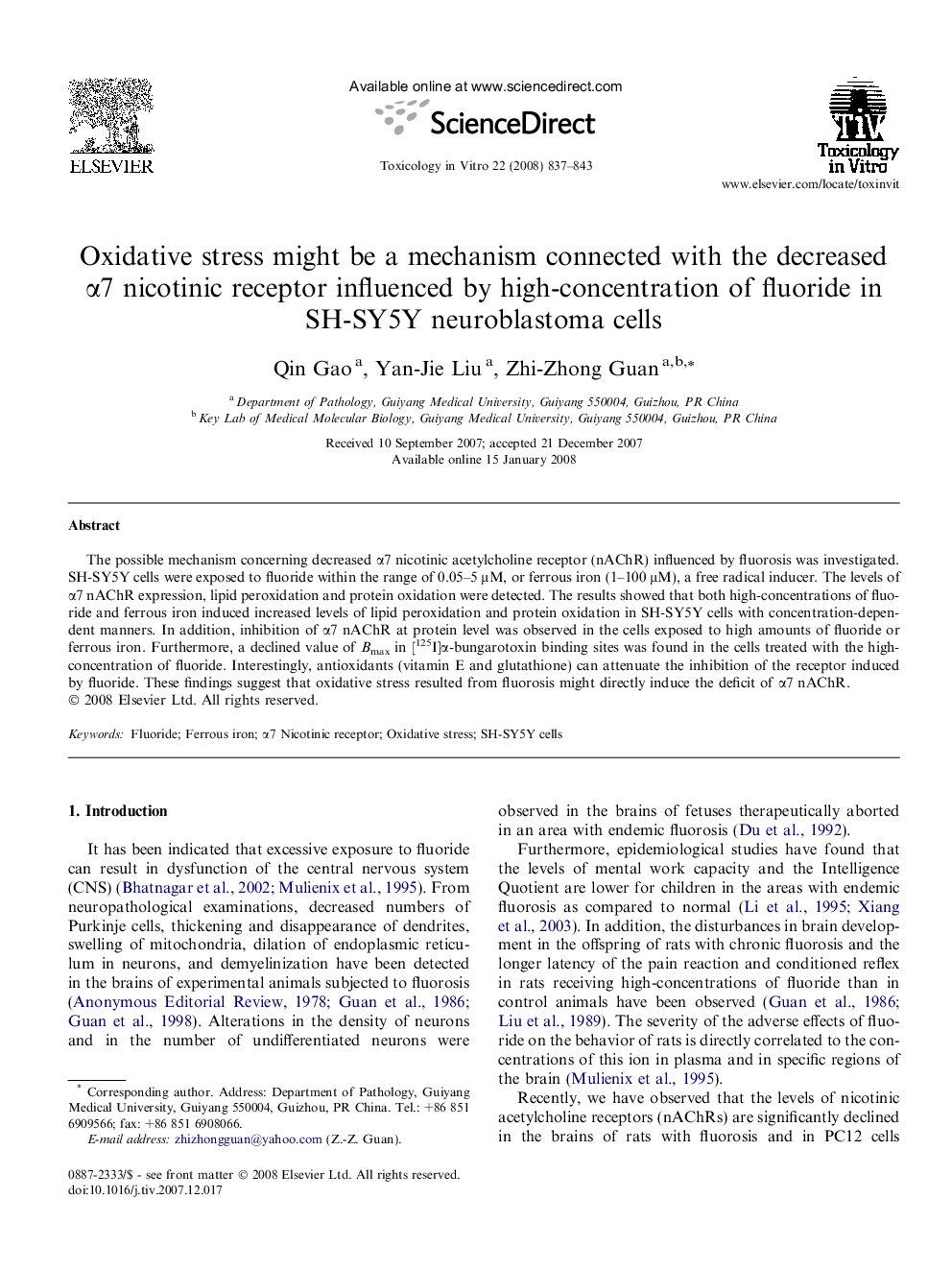| Article ID | Journal | Published Year | Pages | File Type |
|---|---|---|---|---|
| 2603371 | Toxicology in Vitro | 2008 | 7 Pages |
Abstract
The possible mechanism concerning decreased α7 nicotinic acetylcholine receptor (nAChR) influenced by fluorosis was investigated. SH-SY5Y cells were exposed to fluoride within the range of 0.05-5 μM, or ferrous iron (1-100 μM), a free radical inducer. The levels of α7 nAChR expression, lipid peroxidation and protein oxidation were detected. The results showed that both high-concentrations of fluoride and ferrous iron induced increased levels of lipid peroxidation and protein oxidation in SH-SY5Y cells with concentration-dependent manners. In addition, inhibition of α7 nAChR at protein level was observed in the cells exposed to high amounts of fluoride or ferrous iron. Furthermore, a declined value of Bmax in [125I]α-bungarotoxin binding sites was found in the cells treated with the high-concentration of fluoride. Interestingly, antioxidants (vitamin E and glutathione) can attenuate the inhibition of the receptor induced by fluoride. These findings suggest that oxidative stress resulted from fluorosis might directly induce the deficit of α7 nAChR.
Related Topics
Life Sciences
Environmental Science
Health, Toxicology and Mutagenesis
Authors
Qin Gao, Yan-Jie Liu, Zhi-Zhong Guan,
